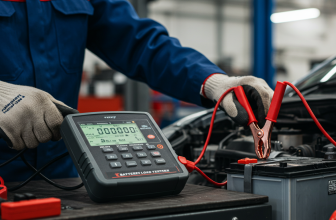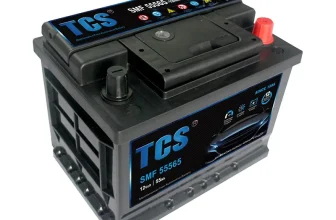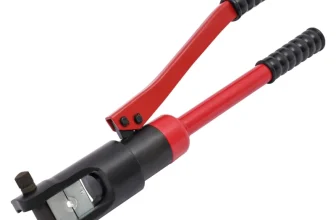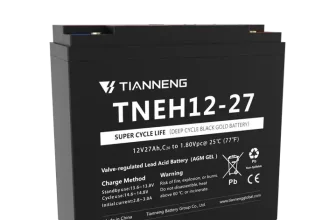It’s a lot of fun and quite soothing to go on a boat trip, whether for pleasure or work. However, there are several prerequisites for a boat excursion, and a battery is one of them. Now more than ever, many retailers stock multi-use batteries explicitly designed for boats, a trend made possible by rapid technological advancements.
Still, it is not fun to stand helpless in the middle of nowhere because the boat’s batteries ran out of energy. Therefore, as a sailor, you should be familiar with battery charging methods or have the ability to adapt to such circumstances.
There is typically more to the procedure than simply plugging in the batteries and starting the motor. The configuration must be accurate and optimal for utilizing and charging the battery.
Even if you have the best trolling motor batteries available they will not perform up to their potential unless you take care of them by charging them properly.
Charging Battery From Motor
Most motors will also charge the batteries linked to them when running. This charging process is analogous to how a car’s battery gets charged while in motion. While idling, a car’s engine still provides power to the battery.
Older motors are the only vehicles for which this is not the case. If your motor is older than 20 years, you should check to determine if it is still capable of charging the battery.
It is recommended that you do the test using a voltmeter or multimeter. These items are often sold at marine and motor shops.
Check the battery’s capacity per your device’s specifications. Start the boat up and cruise about for a time. Then give the battery another go.
The battery is kept at a constant or increasing charge by your motor. Your battery isn’t being charged by the engine if it isn’t accumulating or keeping a charge.
You may modify most outdated setups to function as battery chargers. Read on if you want to know how to do it with an outboard motor.
If your motor is very complicated, you should have a specialist do the work for you, as you risk killing the motor and draining the battery if you don’t.
How to Charge Trolling Motor Batteries While on a Lake
For your electronic starter outboard engine to function, it must have been manufactured within the last 20 years and equipped with either a starter or an alternator. When the engine is on, they allow the battery to be charged. Many outboard motors that don’t use electric starters can now also charge batteries.
In order to start this process going, you need to link the battery to the motor. If the motor starts up and keeps running, it will also charge the battery. There is nothing else you need to do.
It is possible to make a straightforward adjustment to your outboard motor in order to give it the ability to charge your batteries. A regulator/rectifier and maybe a lightning coil are all required.
Before continuing, please verify that your purchased replacement components are suitable for your outboard motor model.
Charging Trolling Motor Battery
First, determine if a lightning coil has been added to your boat. Two green wires may be visible on the underside of the flywheel of some motors.
Usually, four various colored wires, notably red, black, and two others, should come out of your regulator/rectifier. Most often, these colors may be green or a tricolor of different colors alongside blue.
These cables of a different hue bring in the alternating current. DC-out is what connects to the red and black wires. It’s positive in red and negative in black.
You should then connect the two wires on the flywheel of a pull-start engine to the regulator or corresponding rectifier’s wires of the opposite color. Make a connection between the negative pole of your battery and the black wire coming from the regulator/rectifier.
Moreover, to activate the boat’s starting motor, connect the negative terminal of your battery cable to the engine block ground. Then, link the positive wires to the starting solenoid at the point where battery power enters the solenoid.
Consequently, it minimizes the wiring you need to run while maintaining the same level of performance.
Installing a Lightning Coil
Get a lightning coil specific for your boat’s motor if you need to install one.
For this purpose, you may watch a tutorial to understand the demonstration well. You must know the method of removing a flywheel. After removing the flywheel, the next step is to screw in the lighting coil to the boat. It is vital that you verify the bolts in terms of tightness and alignment of the screw holes.
Bear in mind that the amount of charge generated by smaller outboard motors is significantly lower than that caused by bigger ones. You’ll need to upgrade to more powerful batteries to get the most power and range out of bigger engines. Simply said, that implies the battery has to be charged more frequently.
You may also need to charge your battery between usage if your outboard motor’s energy requirements exceed what the battery can provide. Thus, you must start each day on the water with a battery filled with charge and power.
Charging Your Battery With Solar on the Lake
It is a question that drives the attention of many people since we live in an advanced technological era. Can we charge our trolling motor battery with solar energy while on the lake? It is a complicated issue whose solution is very context-specific.
You may use a solar panel to charge a boat battery to do just that when the boat is at sea. However, solar charging is impossible when the battery is already in use.
Most fishermen don’t constantly engage in battery-draining activities. Even while you’re not using the battery, the solar arrays will continue to charge it.
However, if you frequently use your trolling motor or have lights, a GPS, and other devices plugged up, the photovoltaic panels may lack the potential to replenish the battery.
While solar cells can assist in replenishing some of the power lost from your battery, they may not be able to do so while the boat is in motion. A sizable solar array would need to be installed to replace the electricity a battery can supply.
Most fishermen do not have vessels big enough to accommodate such arrays. Arrays are costly, and weighing the benefits against the costs is essential before making a purchase.
Some of the most recent solar solutions may be more potent and supply the battery with more energy. These can be pricey and incompatible with some battery types; research your setup well before purchasing and installing one.
Most solar panel systems are designed to charge boat batteries only while the vessel is at rest. The battery may charge if you leave your boat on its dock.
Make sure the connection is secure before you start using any solar charger. It will prevent damage to the battery and allow for maximum charging efficiency.
Should You Disconnect Boat Batteries When Charging?
You should not unplug the batteries if you are currently operating your boat. Additionally, if you want to keep your boat in the water when it is not in use, you should not unplug the batteries either. This linkage to the engine is necessary for the battery to receive power from the motor continually.
Furthermore, always use a fresh battery when recharging or switching devices. If the water in the bilge reaches an unsafe level, you must take this action. If you wire up a battery, it will activate the boat’s bilge pumps so that you don’t risk severe problems with your boat by not having a battery.
Disconnecting the boat’s batteries before connecting them to a charger is the safest alternative, especially if you are not using the boat at the time. It has many benefits to consider.
On the surface, this can reduce battery drain. There might be appliances on board that continue to use electricity even while the switch is in the off position. This current may seem slight, but it adds up gradually and can quickly deplete a battery’s power.
Second, taking the boat’s battery out of the boat while charging protects the cell and the boat from harm.
Also, once you are done charging, you need not remove a boat’s battery from the charging system. The charger should turn off if your battery can hold no more charge.
If your charger is more than five years old, you should probably get a new one. Before then, there were still some faulty chargers on the market. Thanks to technological advancements, today’s chargers can provide a consistent and exact charge.
If you need to recharge your batteries in stages, you should look into getting a multistage charger. When that happens, you might never have to disconnect your battery again.
How to Disconnect a Boat Battery
Disconnecting the battery is crucial to prolong the battery life. Here’s what you should do if you ever need to take the boat’s battery out of commission.
- Open the compartment to ensure no leaks, degradation, or rust in the battery. Take care to fix any issues carefully.
- Disconnect the battery’s negative cable.
- Take the battery’s positive cable and disconnect it. Keep these wires apart from one other.
- It’s time to take the battery out of its housing.
- Tuck the batteries away someplace dry and temperate.
Overcharging Your Trolling Motor Battery
It is possible to overload the battery of a trolling motor. Some chargers tend to overcharge ever-so-slightly since they operate under the assumption that you will not be using the battery right away, and they want to ensure that it has a full charge when you use it.
Even a slight amount of overcharging might cause your battery to become damaged. When you overcharge the battery, it begins to boil and may even shatter eventually. When it reaches that point, it will no longer serve its purpose for you, and you need to replace it.
Undercharging Your Trolling Motor Battery
There is also the possibility of undercharging a trolling motor battery. This phenomenon, in turn, causes a process known as sulfation, characterized by the formation of sulfate crystals on the minus-charged pole within the battery as time passes.
Since it takes some time for these crystals to form, you won’t notice a decrease in performance immediately. However, it directly impacts the battery life since sulfation reduces it considerably.
Proper Charging Your Trolling Motor Battery
Invest in a battery charger for your boat that can determine the type of battery it is charging and the optimal charging parameters for that battery.
The NOCO Genius Gen5X2 is a wonderful choice in this scenario. It optimizes and regulates the charging process so that the battery does not get more charge than required.
Check NOCO Genius GEN5X2 Prices
In addition to that, it adjusts how quickly you can charge depending on the weather outside. You must take extra precautions to prevent the battery from either overcharging or undercharging.
Many other chargers, like ProSport from ProMariner, are yet other fantastic alternatives to consider. Although it can only charge a single battery at a time, it provides a more rapid charge, prevents the battery from overcharging, and lengthens its lifespan.
Check ProMariner ProSport Prices
Conclusion
You should now be able to guarantee that you will enjoy the best outcome from your trolling motor batteries. While the boat propels with the outboard motor’s help, you may use it to charge the battery.
After fishing for the day, you may finish charging the battery by connecting it to a solar panel. However, it is crucial that you maintain the proper charging process.
Simply put, neither overcharge nor undercharge your trolling motor battery, as both adversely affect it. As long as you adhere to some simple guidelines and use quality chargers, your battery should last for a long time.







